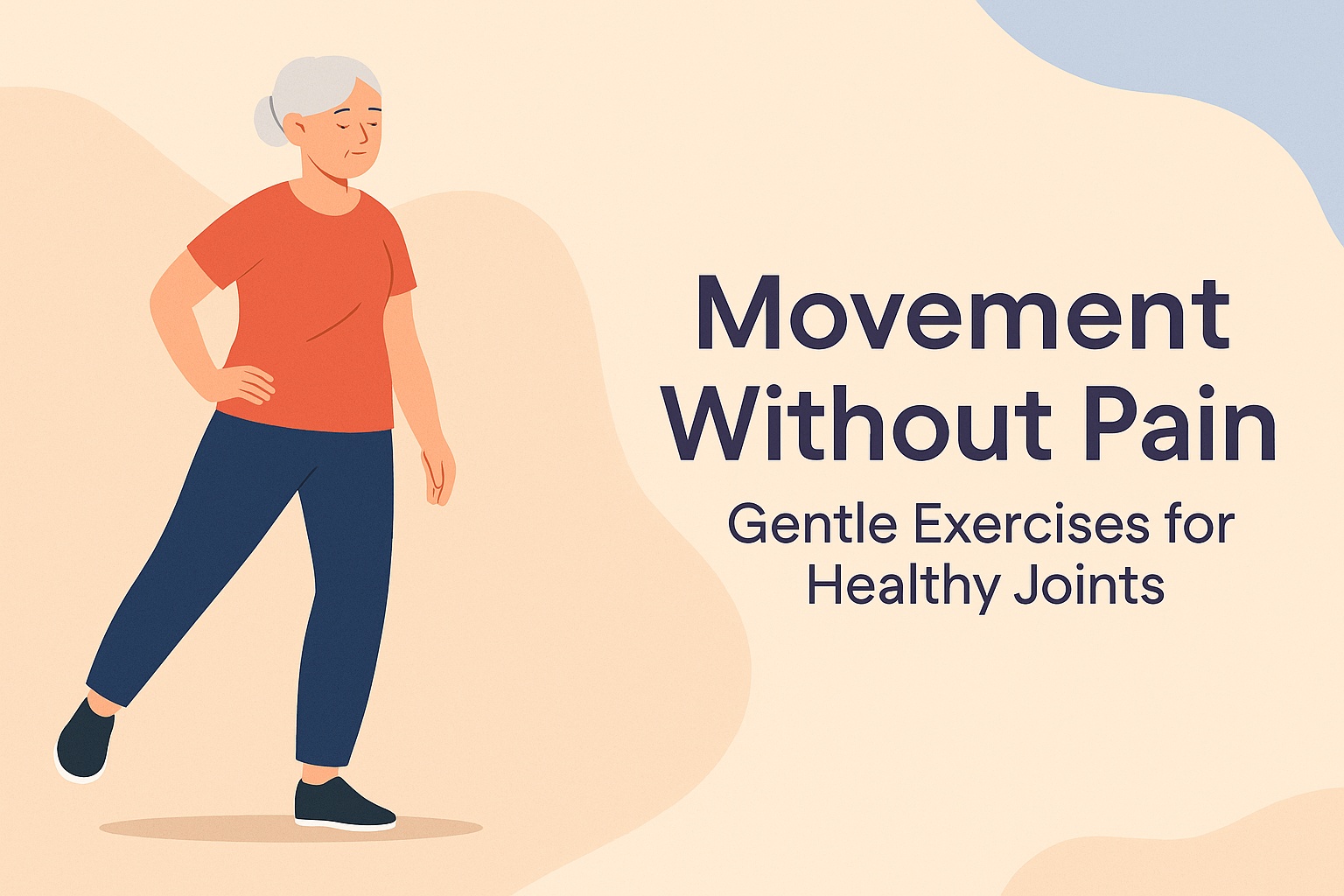
If you’re living with joint discomfort, the idea of exercise might sound intimidating. But gentle movement is actually one of the best ways to protect your joints and improve your comfort. The key is to move in a way that supports—not stresses—your body.
Why Exercise Helps
Movement increases circulation, strengthens the muscles that support your joints, and helps reduce stiffness. It can also improve your balance and coordination, which helps prevent falls and further injuries.
Best Types of Joint-Friendly Exercise
🏊 Swimming or Water Aerobics: The water supports your body weight, reducing pressure on joints while allowing full movement.
🧘 Yoga or Stretching: Increases flexibility, reduces stiffness, and improves posture. Start with beginner routines or chair yoga.
🚶 Walking: Low-impact, easy to start, and great for the hips, knees, and ankles.
🚴 Cycling: Whether on a stationary bike or outside, it builds strength without impact.
🧍 Simple mobility drills: Gentle leg swings, shoulder rolls, or ankle circles can be done anywhere—even at your desk.
How to Start Safely
Begin slowly, with just 5–10 minutes a day
Focus on how your body feels—not how hard you can push
Use supports (like a chair or railing) if needed
Warm up with small movements before doing more
Stay consistent, even if you start small—little progress adds up
What to Avoid
High-impact jumping or sudden twisting
Pushing through sharp or intense pain
Skipping rest days—your body needs recovery time
Conclusion
Movement is medicine—for the mind, muscles, and joints. With the right approach, even a few minutes of gentle exercise can lead to less pain, better strength, and greater confidence in your body. It’s never too late to start moving.
